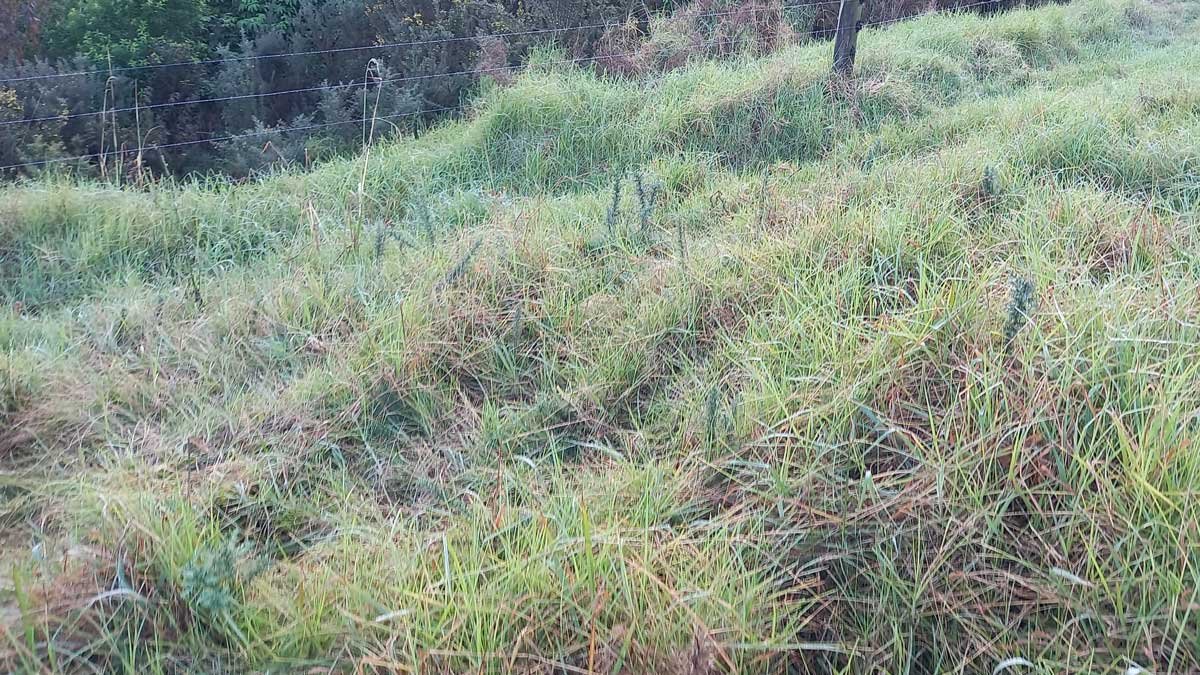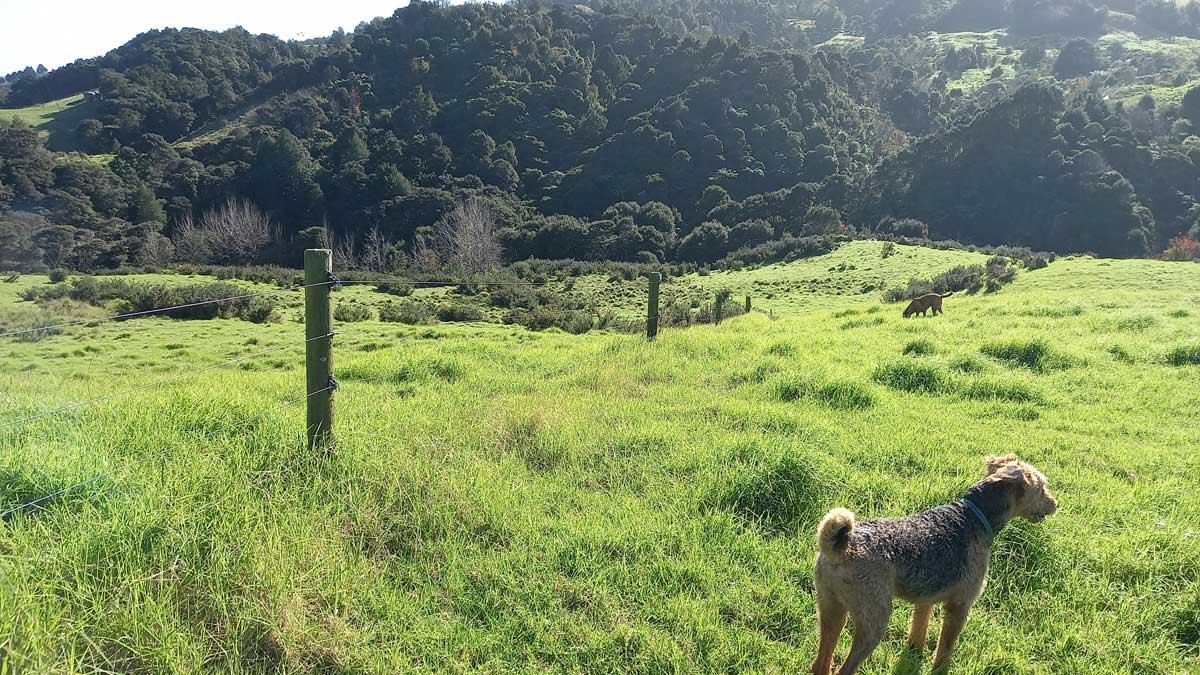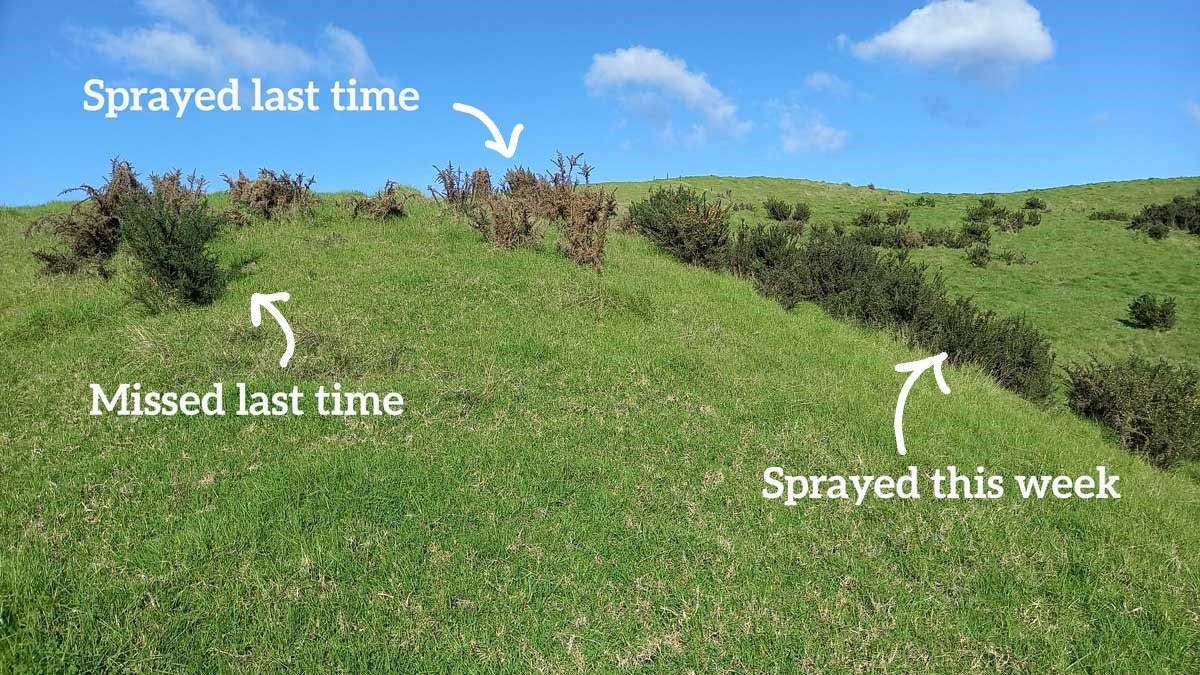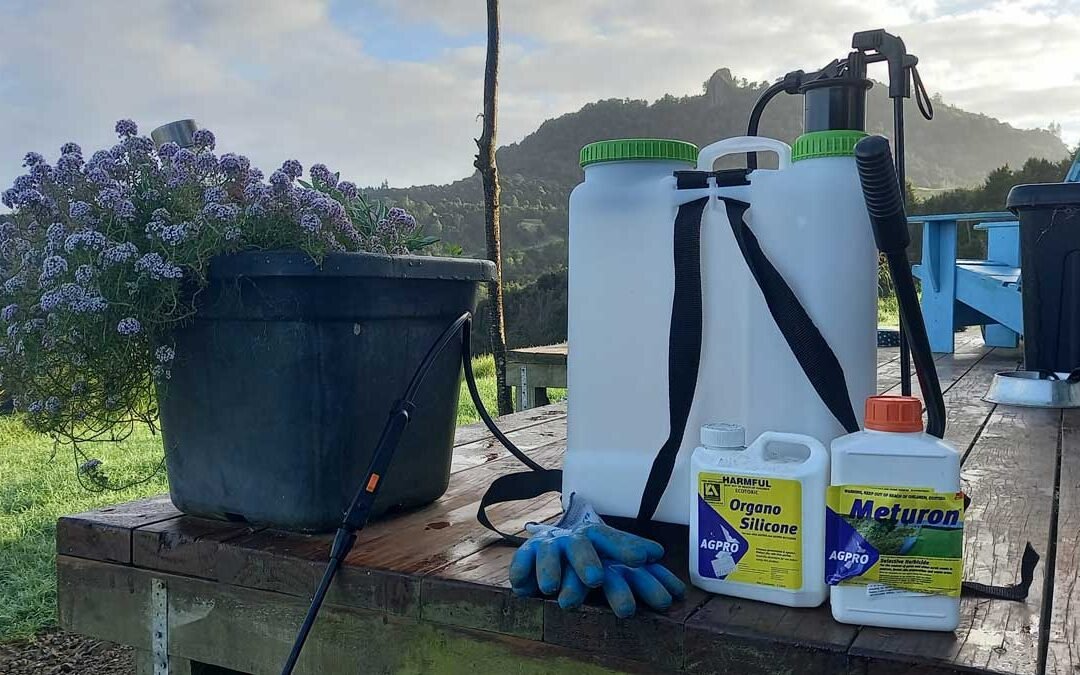This week I managed to get out and do some gorse spraying. It’s a job that needs doing as often as humanly possible, but which is often hampered by the weather or other commitments.
We’ve managed to get one paddock fully under control. It needs going over about once every three months to get whatever pops up, but we’re at the stage where that can be knocked out with a small amount of spray in a couple of hours.
The other paddocks… are a different story. Whenever a still dry patch of weather, my diary, and my mood coincide, I get out there with my backpack sprayer and hit whatever is the highest priority at the time.
The sprayer
We have a super-cheap Number 8 15l knapsack sprayer. It’s very uncomfortable if you try to carry the full 15l, but if you do 10l at a time, it’s actually pretty great.
This is our second one of these. We bought the first one thinking we’d learn what we like/dislike in a sprayer, then replace it with something better when it died.
It took 5 years of trusty service before our first sprayer finally succumbed to UV exposure. But I was so impressed overall that I couldn’t quite justify jumping an additional $150 to a ‘Solo’ sprayer.
They’re slightly more comfortable, sure, but unlike the smaller 5l sprayers (where Solo is a significantly better choice), the functionality of the 15l sprayer was comparatively fine.
In the end I decided to get another Number 8 one and just treat it better this time!
The spray
As much as I’d love to be organic, that’s a goal, rather than a starting position. For gorse, we use a chemical called Metsulfuron methyl. This will kill plants and trees, without killing grasses. It’s pretty potent so should always be used at the correct measures. We use 1g per litre of water for gorse.
Additionally, I add a penetrant called Organo silicone. This is basically a soap that helps break down the waxy protective layer of the gorse, allowing the metsulfuron to penetrate. Again, at a ratio of 1g per litre of water.
Metsulfuron at this rate will also kill buttercup, ragwort, foxglove, taiwan cherry, privet, thistles, and dock. So I tend to hit whatever I stumble across as I go.
These aren’t chemicals you can pick up at the local hardware store. I buy them online. Lately supply has been patchy, so the three options I tend to check are AgPro, Rainbow & Brown, and Spray Shop.
The grades of gorse
Gorse on our property comes in two sizes: baby and grand-daddy. My goal when I go out spraying is to get all the babies I can find, and as many grand-daddies as I can.

Baby gorses require significantly less spray, and they often grow together, so you can hit them pretty quickly. Ideally, I want to get to the stage where the only gorse I ever need to spray is baby gorse.
This baby gorse shown above is growing in an area we cleared early on. I make a point of swinging by whenever I go out with the sprayer to stop them taking back over again.

It looks small from here, but it’s big up close.
Grand-daddy gorse is huge. Taller than me. Usually in big clumps. Every branch needs to be sprayed to kill it. And even then it might take a few tries.
Sometimes the clumps are too thick to get into the middle of. I spray around the outside of it, and once it’s dead we clear it back and spray the next bit. Slowly, slowly, we move the needle a little closer to our favour.
Good exercise
Gorse loves our north-facing slopes. Clambering around them with 10 litres on my back is good exercise. I make sure to take water. I pop on my headphones and listen to my podcasts and just go until I run out of spray. The dogs come with me and roam around the paddock or chase Paradise ducks as I work.
Anywhere I’ve managed to make progress on the grand-daddy gorse needs checking – sometimes I missed a spot last time. We’d probably be more efficient if we used a dye in our spray, but I haven’t honestly found dye to be helpful enough to justify the mess or expense.

Once I’ve hit the baby gorse and checked on the previous patches for regrowth, I find a patch of grand-daddy gorse and try to get the whole lot.
Sometimes we’ll come back later and knock the dead gorse down – especially along fence lines. But on the steep slopes we leave it. It reduces the cow’s interest in the most erosion-prone areas and helps hold our slopes together.
Slowly over time, the kikuyu grows through it, and the gorse eventually decomposes – though that takes years. The shade and thick cover seems to go some way to holding back the regrowth though. There seems to be fewer baby gorses on the slopes we haven’t cleared.
Forever job
Gorse seed remains viable for a long-ass time. And gorse is really good at producing and dispersing seed. It’s a job that will never end.
But it does get easier. Once an area is cleared and under control, it’s easier to keep it that way. Slowly, we are gaining control over a second paddock – we’re about 3/4 of the way there.
Eventually, it’ll still be a job, but it won’t be a crazy overwhelming one. We’ve found a little bit of progress when we get the chance slowly pays off.


